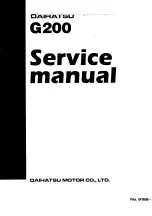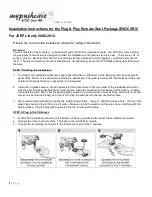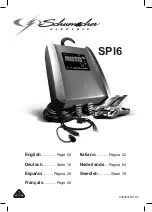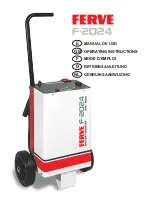
Clutch Operation
Clutch Break-In
The clutch may slip for a short time while the friction
surfaces break-in on a new or newly-installed clutch.
However, allowing the clutch to slip for more than
two seconds can severely damage the clutch disc,
pressure plate, and the flywheel.
NOTICE
Do not allow sustained slippage of the clutch;
which will severely damage the clutch disc, pres-
sure plate, or flywheel. Damage caused by clutch
slippage due to improper break-in is not warrant-
able.
During initial operation of a new vehicle or a vehicle
with a new clutch, check for clutch slippage during
acceleration. If the clutch slips, decelerate until the
clutch does not slip. Allow the clutch to cool 15 to 30
seconds, then gradually accelerate again. If the
clutch continues to slip, repeat the procedure as
many as five times. If the clutch slips after five at-
tempts, stop the vehicle and allow the clutch to cool
for at least one hour. Notify your Freightliner dealer
of the problem.
Moving the Vehicle in the Proper Gear
An empty vehicle can be started in a higher trans-
mission gear than can a partially- or fully-loaded ve-
hicle. Select the gear combination that allows the
vehicle to start moving with an idling engine or, if
necessary, just enough throttle to prevent stalling the
engine. After the clutch is fully engaged, the engine
can be accelerated to the correct rpm for the upshift
into a higher gear.
Gear Shifting Techniques
Upshift into a higher gear when the vehicle speed
allows the transmission input shaft speed to match
the flywheel speed when engaging the clutch. This
technique results in the smallest speed difference
between the clutch disc and the flywheel, and causes
the least heat and wear on the clutch assembly.
When downshifting, increase the input shaft speed to
match the flywheel by slightly revving the engine. For
transmission operating instructions, refer to the trans-
mission headings in this chapter.
Vehicle Loading
Clutches are designed for specific vehicle applica-
tions and loads. Do not exceed these weight limita-
tions.
NOTICE
Exceeding vehicle load limits can result in dam-
age to the clutch and the entire powertrain.
Clutch Brake
Apply the clutch brake by depressing the clutch
pedal all the way to the floor plate. The last part of
the clutch pedal travel will compress the clutch brake
plates together, stopping the transmission input shaft.
The clutch brake stops the transmission gears from
rotating in order to quickly engage a transmission
gear after idling in neutral.
NOTICE
Never apply the clutch brake when the vehicle is
moving. If the clutch brake is applied when the
vehicle is moving, the clutch brake will try to
stop or decelerate the vehicle, causing rapid
wear of the clutch brake friction discs. Consider-
able heat will be generated, causing damage to
the release bearings and the transmission front
bearings.
Using the Clutch
Use the clutch pedal only when starting the engine,
launching the vehicle from a stop, or shifting. To
launch a stationary vehicle, depress the clutch pedal
all the way to the floor plate (see "Using the Clutch
Brake" above) and shift from neutral to a low gear.
Slowly raise your foot until the clutch starts to en-
gage. In this position the clutch is starting to connect
the transmission input shaft to the flywheel and is
causing the most heat and wear. Slightly increase
the engine speed and smoothly allow the clutch
pedal to return to the rest position. Do not allow the
clutch to remain in the partially-engaged position any
longer than necessary to obtain a smooth start.
Double-clutch to shift gears while the vehicle is mov-
ing. Depress the clutch pedal most of the way in, but
not all the way to the floor plate. Depressing the
clutch pedal to the floor plate will engage the clutch
brake. Shift the transmission into neutral and fully
Manual Transmissions and Clutch
13.6
Summary of Contents for 108SD
Page 1: ...Driver s Manual 108SD and 114SD Part Number STI 496 Publication Number STI 496 6...
Page 60: ...7 Climate Control Climate Control Panel 7 1...
Page 65: ...8 Cab Features Cab Amenities 8 1 Mirrors and Windows 8 1...
Page 121: ...15 Drive Axles Differential Lock Drive Axles 15 1 Interaxle Lock Tandem and Tridem Axles 15 2...
Page 125: ...16 Steering System Power Steering System 16 1...
Page 179: ...05 13 2009 f545526 Fig 23 3 Headlight Adjusting Headlight Aiming 23 3...
















































